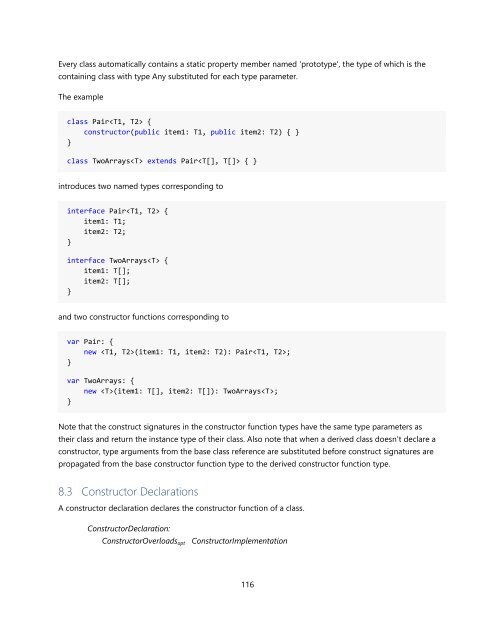TypeScript Language Specification v1.5
TypeScript Language Specification v1.5
TypeScript Language Specification v1.5
Create successful ePaper yourself
Turn your PDF publications into a flip-book with our unique Google optimized e-Paper software.
Every class automatically contains a static property member named 'prototype', the type of which is the<br />
containing class with type Any substituted for each type parameter.<br />
The example<br />
class Pair {<br />
constructor(public item1: T1, public item2: T2) { }<br />
}<br />
class TwoArrays extends Pair { }<br />
introduces two named types corresponding to<br />
interface Pair {<br />
item1: T1;<br />
item2: T2;<br />
}<br />
interface TwoArrays {<br />
item1: T[];<br />
item2: T[];<br />
}<br />
and two constructor functions corresponding to<br />
var Pair: {<br />
new (item1: T1, item2: T2): Pair;<br />
}<br />
var TwoArrays: {<br />
new (item1: T[], item2: T[]): TwoArrays;<br />
}<br />
Note that the construct signatures in the constructor function types have the same type parameters as<br />
their class and return the instance type of their class. Also note that when a derived class doesn't declare a<br />
constructor, type arguments from the base class reference are substituted before construct signatures are<br />
propagated from the base constructor function type to the derived constructor function type.<br />
8.3 Constructor Declarations<br />
A constructor declaration declares the constructor function of a class.<br />
ConstructorDeclaration:<br />
ConstructorOverloads opt ConstructorImplementation<br />
116


















